In the vast expanse of digital space, data has emerged as the new oil. This data, hidden within countless websites, is like a gold mine waiting to be tapped. One technology that’s revolutionized the way we extract and utilize this gold mine is web scraping.
Web scraping is a technique used to extract large amounts of data from websites. The data on these websites is unstructured, but web scraping allows us to convert it into a structured form and have this data saved in a database or to a local file on your computer. From market research and price comparisons to sentiment analysis and tracking competitor activities, web scraping plays an integral role in data-driven decision-making across sectors like e-commerce, finance, real estate, and more.
However, web scraping can be a complex task, particularly when dealing with dynamic websites that use JavaScript for content loading. This brings us to the focus of our discussion: ParseHub, a versatile and powerful web scraping tool. Born out of the need for easy-to-use data extraction tools, ParseHub was designed to turn unstructured web data into structured, usable information, enabling anyone to collect and leverage web data.
In this post, we’ll delve into the world of web scraping, explore ParseHub as a powerful web scraping tool, and discuss its hardware and software requirements. Then, we’ll guide you through its working process. Finally, we’ll draw comparisons with other web scraping tools available on the market.

What Is ParseHub?
ParseHub is a free, efficient, and user-friendly web scraping tool. It enables users to extract data from web pages, even if they’re complex and dynamically loaded. Additionally, it simplifies the web scraping process to make data accessible to anyone, regardless of their coding skills or technical knowledge. ParseHub converts unstructured web data into a structured format. This enables businesses, researchers, and individuals to easily gather and utilize data from the web, enhancing their data-driven strategies and operational efficiency.

Overview of ParseHub’s Features
ParseHub is intuitive and powerful, handling even the most complex scraping tasks. With a mission to make data accessible to all, ParseHub leverages advanced machine-learning technology to turn websites into useful data.
Its core features include an easy-to-use interface, the ability to handle dynamic websites, and the ability to navigate and extract data from sites using Ajax, JavaScript, cookies, sessions, and redirects. ParseHub operates as a freemium service, meaning it offers both free and paid services. The free version is surprisingly rich in features. Its key advantage lies in its user-friendly interface, making it easy for beginners to get the hang of web scraping. All these features are wrapped together to simplify the web scraping process.
Requirements for Using ParseHub
ParseHub is a lightweight tool that can be installed on most modern systems. On the hardware front, a computer with a minimum of 1 GB RAM and 300 MB of free disk space is recommended, although 2 GB or more can improve performance with larger datasets.
On the software side, ParseHub supports Windows 7 and above, macOS X Mavericks (10.9) and above, and Linux: Ubuntu 14.04+, Fedora 21, and Debian 8. (The ParseHub app is currently not supported on macOS Ventura but will be with future updates. You can check here to work around it if you’ve already updated your macOS.)
How ParseHub Extracts Data
The basis of ParseHub’s operation lies in selecting and extracting data. After entering the URL of the webpage you want to scrape, ParseHub allows you to choose the data elements using the selectors. Training the software involves identifying patterns in the data structure and teaching ParseHub to follow these patterns across multiple pages.
The data extraction process is then executed. ParseHub navigates the website and collects the data. Finally, it delivers the scraped data in your chosen format (Excel, JSON, or API).
Here’s an example of what it looks like if you exported the data as an Excel/CSV file:
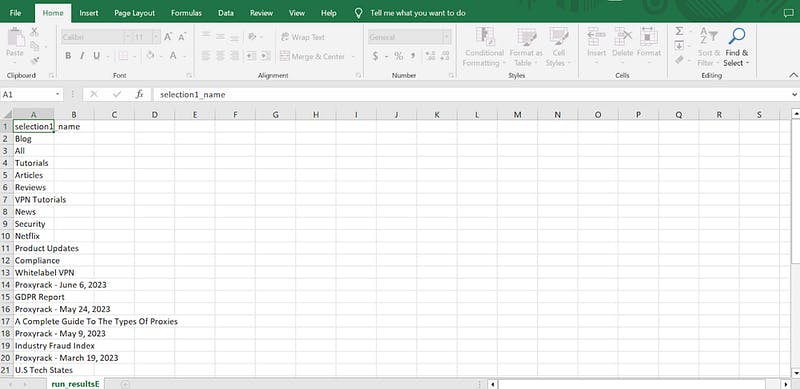
And here’s an example of a JSON file:
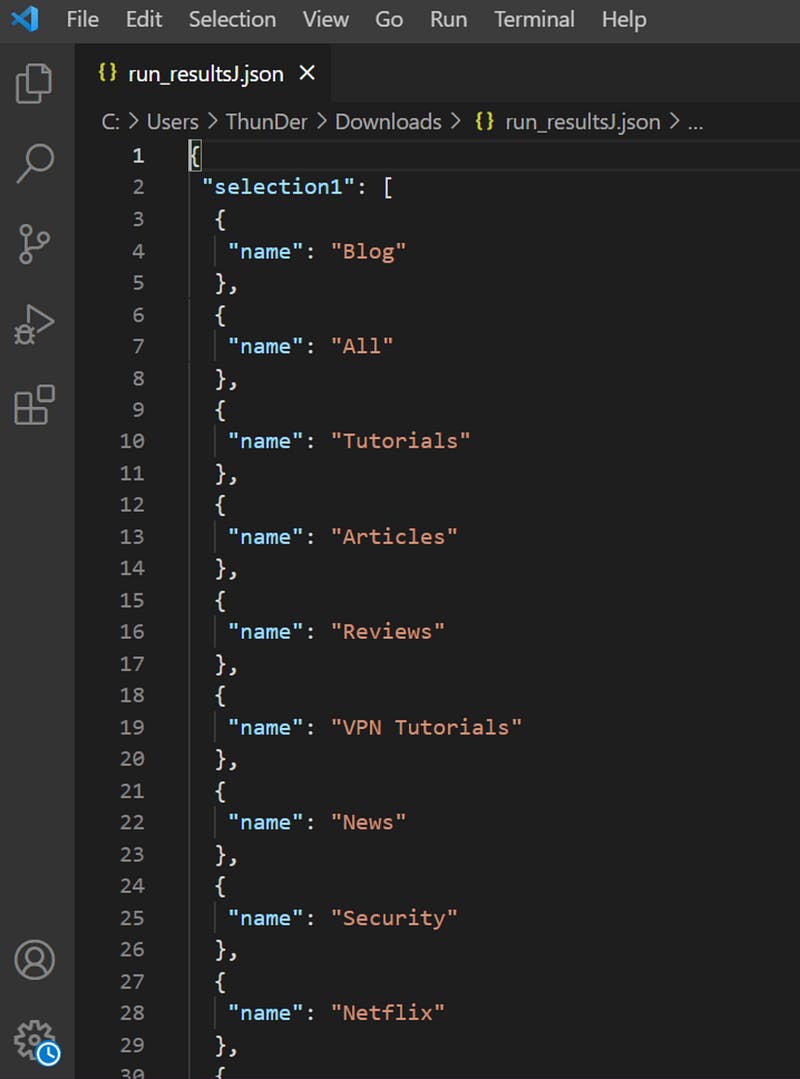
ParseHub’s interface is straightforward, with the main features located on the left pane where you can choose new projects, select data, and initiate data extraction processes.
Use Guide.
Let’s walk through a step-by-step guide on how to use ParseHub:
- Download and install: Download ParseHub from the official website and install it on your system. There are also instructions on how to handle any problems should you encounter any during the installation process.

2. Open the app:After installation, open ParseHub, sign up, or log in to the application. When you’ve successfully logged in, the app will offer you a helpful walkthrough of how it works.

3. Create a new project: To work on a project using ParseHub, click on +New Project to begin.

4. Enter URL: Add the URL of the website you want to scrape to the textbox at the top-left of the screen. Then click on Start project on this URL.
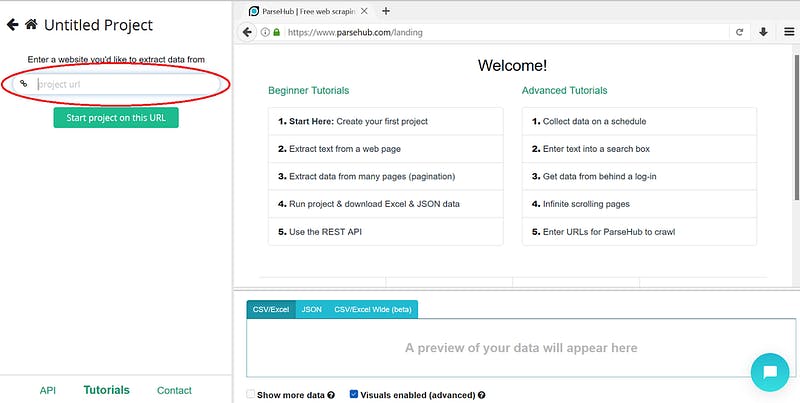
5. Select the data: Once the webpage loads, you can make a selection on the page, and ParseHub will detect similar items to extract the data you need.
- All the sections covered in green indicate areas that have been selected.

- You’ll be shown a preview of the selected data below the webpage area.

6. Extract data: Select the data you wish to extract; then click on Get Data. The tool provides an option to extract various details like text, URL, and HTML.

7. Run and export the project: Once you’ve specified all the data fields, you can run the project.
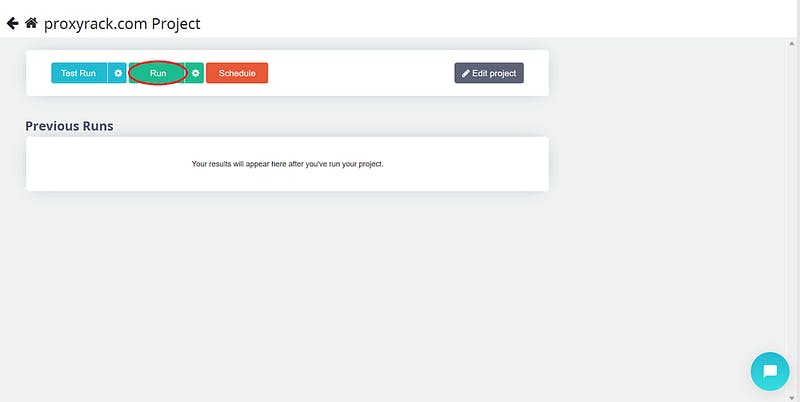
You can then download the data in different formats like CSV/Excel, JSON, or as an API.
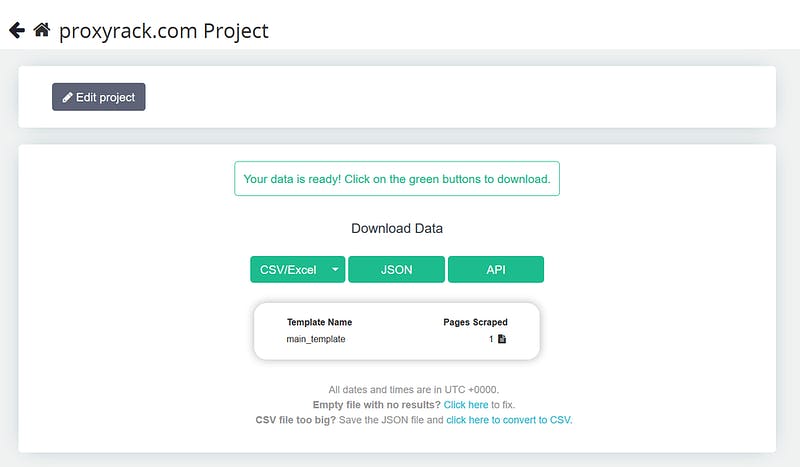
ParseHub vs. Other Web Scraping Tools
When comparing ParseHub to other popular web scraping tools, a few key parameters stand out: ease of use, cost, customer support, and the ability to scrape complex websites.
In terms of ease of use, ParseHub excels with its intuitive interface, making it simple even for non-programmers to scrape websites. While the cost varies depending on usage, ParseHub’s free plan is quite generous, and its premium plans offer value for money.
Where ParseHub truly shines is in its ability to handle dynamic websites and complex scraping tasks. Many other scraping tools struggle with Ajax-loaded content and infinite scrolls, but ParseHub navigates these challenges effectively.

Is ParseHub a Good Web Scraping Software?
So, is ParseHub a good web scraping software? Yes, ParseHub is a powerful and user-friendly web scraping tool. It offers a unique blend of simplicity and advanced features like handling dynamic websites, which sets it apart from many other tools.
In scenarios where the data structure on a website is complex or requires interaction (like clicking or scrolling), ParseHub is the preferred choice due to its unique capabilities.
However, like any tool, it may not be perfect for everyone. Some may find it too advanced for very basic scraping tasks, while others may require features that ParseHub doesn’t offer. It’s always best to identify your requirements and test a few different tools before deciding. Similar to other tools, ParseHub can extract data from websites and deliver it in a structured format. What sets ParseHub apart is its
- ease of use,
- ability to handle complex tasks like dealing with infinite scroll, Ajax, and multi-level navigation,
- compatibility with interactive websites, and
- easy way of handling advanced web scraping functions.
ParseHub is also exceptional in handling interactive maps, calendars, and even infinite scrolls, logins, and drop-downs — a feature that truly sets it apart from many other scraping tools.
Conclusion
Web scraping is an invaluable tool in today’s data-driven world. ParseHub stands out as a powerful ally in this domain. With its robust features, ParseHub is capable of handling various web scraping tasks, including complex ones that many other tools aren’t equipped for.
We’ve carefully directed the topic throughout this post. At this point, you’re fully equipped to choose web scraping tools and understand how ParseHub works.
It’s suitable for a broad range of users. Whether you’re a market researcher scraping data for insights, an SEO specialist tracking competitor websites, or a data enthusiast on a personal project, ParseHub has something to offer.
Take advantage of the opportunity to transform your data acquisition strategies. Give ParseHub a shot and discover the world of possibilities that web scraping can open up for you.
This post was written by Chris Ebube Roland. Chris is a dedicated Software Engineer, Technical Writer, and Open Source evangelist. He is fascinated with the Tech Development world and is dedicated to learning more about programming, software engineering, and computer science. He enjoys building, table tennis, and sharing his knowledge with the tech community and the world at large through his articles.
Originally published at proxyrack.com.
